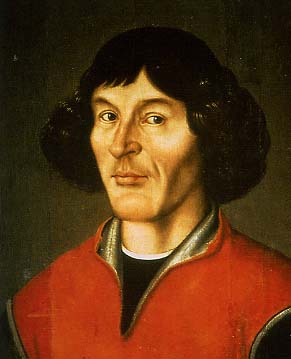According to the archaeologists, the astronomer was buried in a Catholic cathedral in the city of Frombork, about 300 km north of the capital Warsaw.

Polish researchers claim to have found the remains of the skeleton of Copernicus, the Polish mathematician who first developed the theory that the sun is at the center of the solar system, not the earth.
Nicolaus Copernicus, the 16th century astronomer who completely changed the science of astronomy, is apparently buried in a church in Poland. This is what Polish archaeologists reported last Thursday. According to the archaeologists, the astronomer was buried in a Catholic cathedral in the city of Frombork, about 300 km north of the capital Warsaw.
According to the researchers, the skeleton of Copernicus was found buried under the altar in an ancient cathedral in the country.
Prof. Jerzy Gasowski, director of the Institute of Archeology and Anthropology in Poland reported on the discovery at a scientific conference. According to him, last August four archaeologists discovered the skull and some of the bones of the astronomer and cleric. Gesovsky added that the search lasted about a year and focused on the graves under the floor of the church, which was built in the Middle Ages.
Prof. Gesowski, whose team of archaeologists led the search for the famous astronomer's final resting place for more than a year, told a conference on Thursday that he believed the remains under the Frombruk Cathedral on Poland's Baltic Sea coast were those of Copernicus. The age of the skull and bones, as well as the burial place reserved for important personalities of Copernicus's type, as well as some of his facial features, led Gesovsky to state that he is 97 percent convinced that these are the remains of Copernicus, but only DNA tests will be able to confirm the finding completely."
A computerized reconstruction of the skull, carried out in collaboration with local police forensic experts, showed that the head belonged to a gray-haired man, about the age of 70, the age when Copernicus died. The scar above the left eye and the broken nose also seem to fit the drawn portraits of the astronomer. It is known that this is a Catholic priest who left no descendants, but a search for the burial place of his family members, including his uncle Lukács Watzernoda, may provide the necessary DNA samples for this operation.
"The reconstruction corresponds to the portrait," Gesovsky stated, "we know that Copernicus' nose was broken as a result of an accident he had in his childhood. In addition, you can see a scar on the bone, above the left eye, which matches the scar seen in the painted portrait." Gesovski added that the grave was neglected, and that not all the bones were found in it. According to him, the researchers will now try to find descendants of members of the Copernicus family, in order to perform DNA tests.
Copernicus, who died in 1543, was the first to challenge the assumption that the sun moves in an orbit around the earth. In his book "On the Motion of Heavenly Bodies" Copernicus claimed that the Earth and the other planets revolve around the Sun, thereby contradicting the popular belief that the Earth is at the center of the universe. Copernicus did not announce his heliocentric theory during his lifetime for fear of upsetting his churchmen.
Copernicus was the first scientist to disprove the ancient theory, still prevalent in his day, that the sun revolves around the earth. In his treatise "The Commentary", he claimed that the Earth and the other planets revolve in orbits around the Sun.
Unlike Galileo, who actually redeemed his theory and confirmed it, and who, according to the order of the Inquisition, was forced to deny the theory that the earth revolves around the sun (the heliocentric theory) - Copernicus did not have to face the religious institutions, even though the church forbade viewing his works until the middle of the 19th century.
Although he was not persecuted for his views, the fear of a boycott and my attempt prevented him from publicly publishing his observations for years. Copernicus' name hit the headlines last year when a debate arose about his origin - German or Polish.
To the question why the Polish church decided to look for the remains of Copernicus precisely now, Gasowski answered: "I believe that the bishop wanted to correct the distortion. The church wants to glorify him. Today there is no monument of any kind that can be visited by the thousands of tourists who come to the cathedral where he was buried." He added that "we do not know whether Copernicus spoke German or Polish. He only wrote in Latin, and the only thing we are sure of is that he was European."
